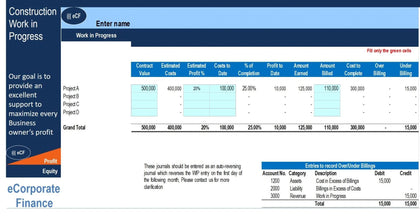Unlock a precise and efficient approach to estimating business valuation with our Business Valuation Spreadsheet. This tool simplifies the calculation of Estimated Business Valuation using Net Present Value (NPV) and projected annual cash flow, covering up to five years and accommodating three distinct revenue scenarios: Standard, Optimistic, and Pessimistic. Plus, easily print the "Summary" sheet in landscape mode for a professional presentation.
Key Features:
1. Data Input Sheet:
Enter your data in the designated white cells; grey cells are for automatic calculations. Focus on row 70 to provide the necessary details.
2. Cash Flow Sheet:
Enjoy an automated display of annual cash flow without any manual input required.
3. Summary Sheet:
View comprehensive results and select a Revenue Scenario (Standard, Optimistic, or Pessimistic) from the dropdown menu in cell "C8". The sheet is fully automated with no manual entry needed.
4. Calculated Parameters:
Access critical calculations, including Weighted Average Cost of Capital (WAAC), Estimated Business Valuation, Annual Debt Repayment, and Cash Flow After Debt Repayment.
Customization Guidelines:
1. Adjust the names in the top section of the "Data Input" sheet (Company Name, Project Name, Created By) to align with your objectives. These names will be automatically reflected in the "Summary" sheet.
2. Modify the names of Operating Expenses in the "Data Input" sheet. You can also add more rows for Operating Expenses if necessary.
3. Refer to the provided video for a comprehensive walkthrough of each step if required.
Key Term Definitions:
· Weighted Average Cost of Capital (WAAC): Evaluates the firm's cost of capital by weighting each capital source, including stock, bonds, and long-term debt.
· Cash Flow: Represents the net movement of cash and cash-equivalents into and out of the business.
· Internal Rate of Return (IRR): Assesses the profitability of potential investments by determining the discount rate that makes NPV zero.
· Net Present Value (NPV): Calculates the current value of all future cash flows, including initial investments, to gauge project profitability.
· Return on Equity (ROE): Measures profitability relative to shareholder equity, indicating profit generated per dollar of equity.























